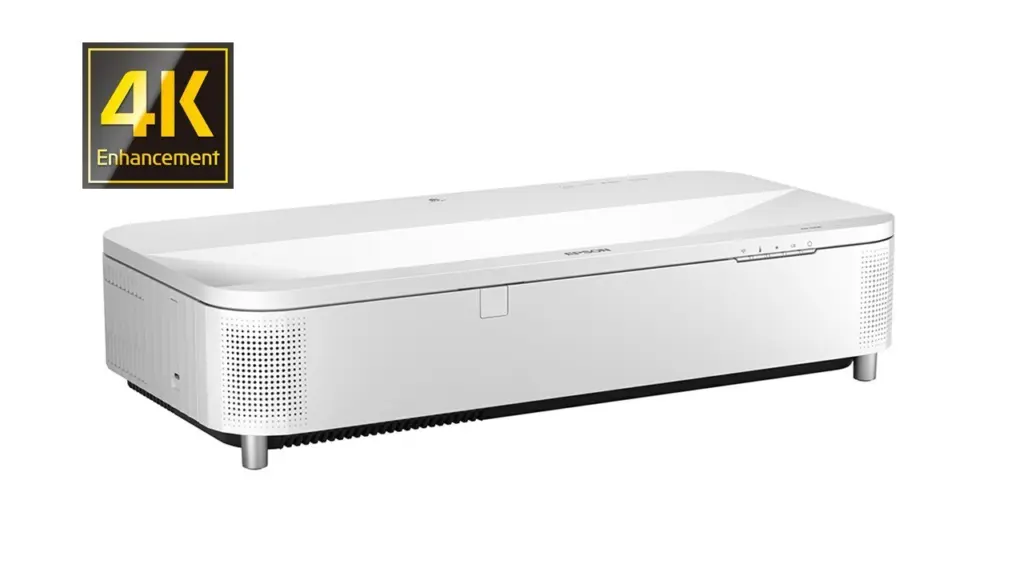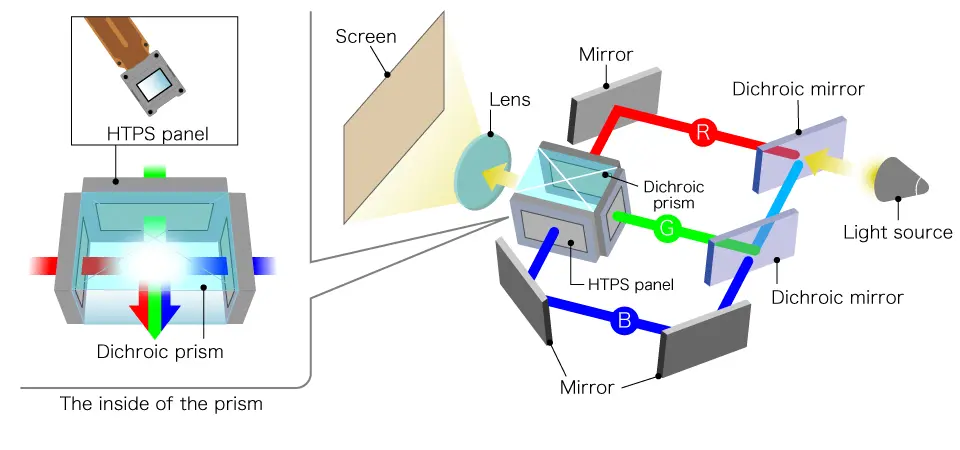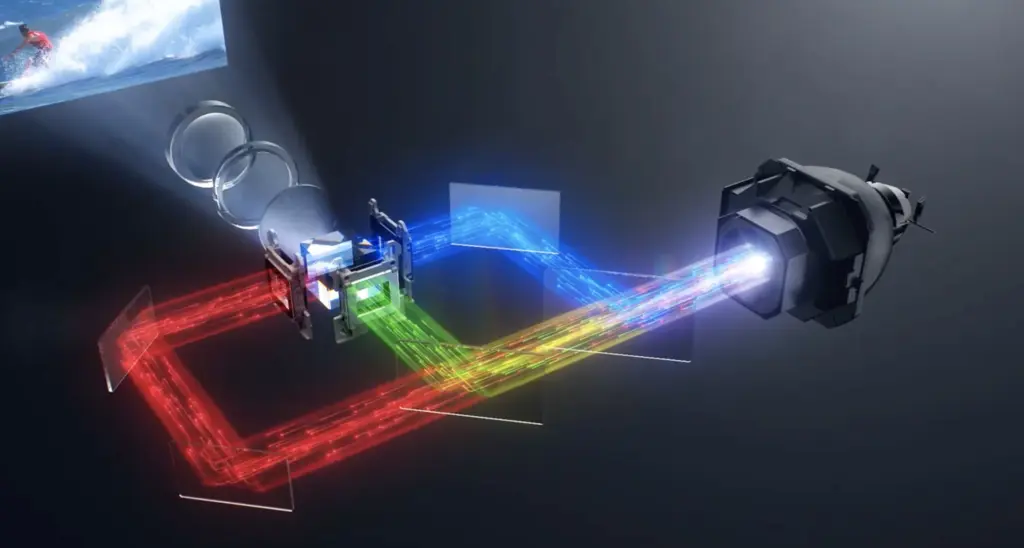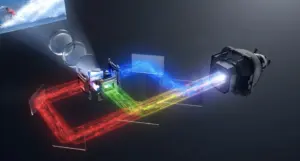Epson has released its new 3LCD extreme short-throw lamp-free laser display, the PowerLite 810E. It offers 5,000 lumens of color and white brightness, a modern chassis design, ease-of-use features, and straightforward installation.

The PowerLite 810E claims a virtually maintenance-free laser light source that lasts up to 30,000 hours, and an ultra-efficient cooling system. The projector has a throw ratio of .16 and can produce an 80-inch image from as close as one inch from the wall, with a built-in split screen feature and standard, ultra-wide, and 16:6 aspect ratios.
| Feature | Specification |
|---|---|
| Technology | 3-chip 3LCD |
| Brightness | 5,000 lumens |
| Resolution | 4K Enhanced |
| Laser Life | Up to 30,000 hours |
| Throw Ratio | .16 |
| Aspect Ratios | 16:9 (standard), 21:9 (ultra-wide), 16:6 |
| Connectivity | HDBaseT, HDMI, USB, RS-232 |
| Networking | Wired/Wireless with Miracast support |
| Audio | Dynamic dual speaker sound system |
| Price | $3,299 (white chassis), black chassis available in September 2023 |
Epson’s 3LCD Technology
3LCD works by splitting the white light from the projector lamp into red, green, and blue (RGB) with the use of dichroic mirrors, coated with a thin film that reflects specific wavelengths of light. Sony claims to have the world’s the smallest 3LCD projectors, the VPL-PHZ61 and VPL-PHZ51.

Each of these three color beams is then sent to a separate LCD panel. These panels are made from high-temperature polysilicon (HTPS), a material that offers high performance in terms of light transmission and precision control, leading to high pixel density, high contrast, and integrated driver circuitry.
The separate red, green, and blue images generated by the three HTPS panels are then recombined into a single full-color image by a dichroic prism before being projected. The dichroic prism is made up of four triangular prisms bonded together. The precision required in this process is extreme, as any tiny gaps or misalignment can result in visible dark lines or double images in the projected image. Epson has developed high-quality optical processing technology over the years to ensure the production of high-quality dichroic prisms.

The claimed advantage of 3LCD is that it prevents a phenomenon known as color breakup or the rainbow effect, when colors are presented sequentially, as can be the case in some other types of projectors, resulting in less natural-looking images. However, it’s probably worth doing a quick summary of the pros and cons of the two main projector technologies and how they compare.
| 3LCD | DLP | |
| Image Generation | Utilizes 3 LCD panel chips for image generation, producing sharp details at native resolution | Single-chip DLP relies on a color wheel, while three-chip DLP uses RGB chips; results in smooth, soft images due to closely packed pixels |
| Brightness | More light-efficient, producing more light with lower wattage consumption | Less bright compared to 3LCD for the same wattage; though LED-DLP combo can enhance brightness |
| Contrast | Displays dark tones poorly, leading to lower levels of contrast | Better contrast, especially in darker tones, making them ideal for home theaters |
| Portability | Typically larger due to housing three separate LCD panels | More compact due to the single-chip design |
| Resolution | Lower-end models may offer poorer native contrast, resulting in lower resolution | Pixels are packed closely together, enhancing image smoothness and softness |
| Lifespan | Light sources require replacement; LCD panels can suffer from internal dust or optical misalignment; individual pixels can burn out affecting display | Light source in DLP projectors is easy to replace, extending lifespan; DLP chip is sealed and protected from dust |
| Artifacts | May show screen door effect when viewed up close; scenes with fast-paced movement can appear distorted | Single-chip variants can suffer from the rainbow effect, creating flashes of banded colors |
| Maintenance | More prone to internal dust accumulation; complex light path may lead to optical misalignment; require filter cleaning or replacement over time; potential for pixel burn-out | Simpler light path results in less dust or misalignment; however, moving color wheel can fail over time |
| Viewing Angle | Restricted viewing angle; viewers need to be almost parallel to screen to get the full display of colors, contrast, and brightness | DLP does not have any noted restrictions on viewing angle |
| Power Efficiency | Generally consumes less power for the same light output | Typically more power efficient; especially when used with LED technology |
| Cost | Generally cheaper but high maintenance cost due to potential for pixel burn-out and need for filter cleaning or replacement | More expensive compared to 3LCD, but lower maintenance cost due to filter-free design and ease of light source replacement |

